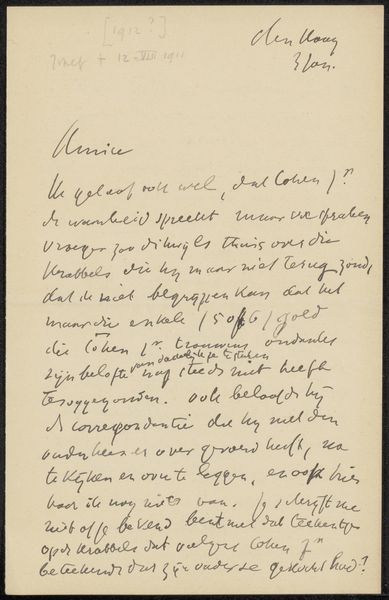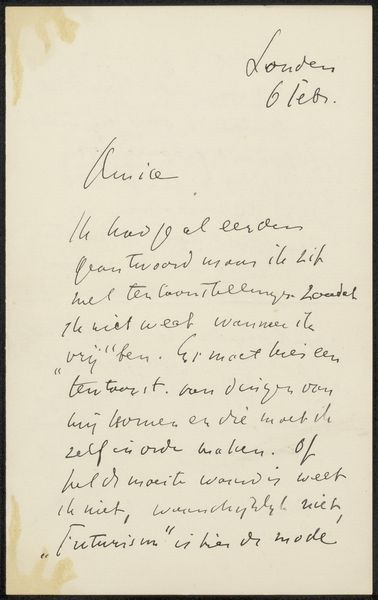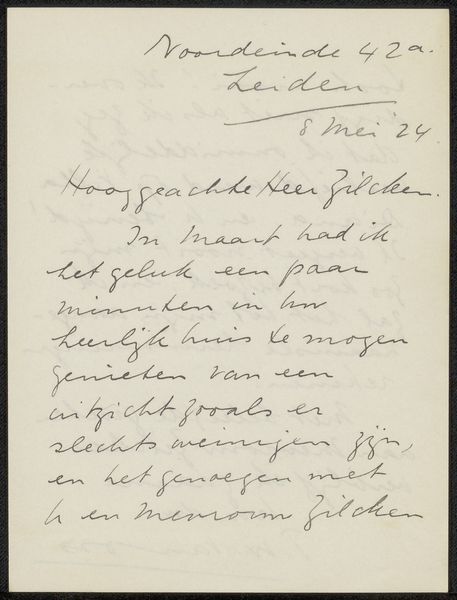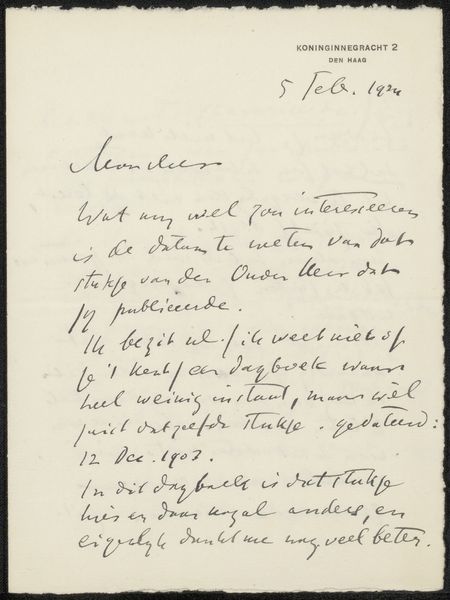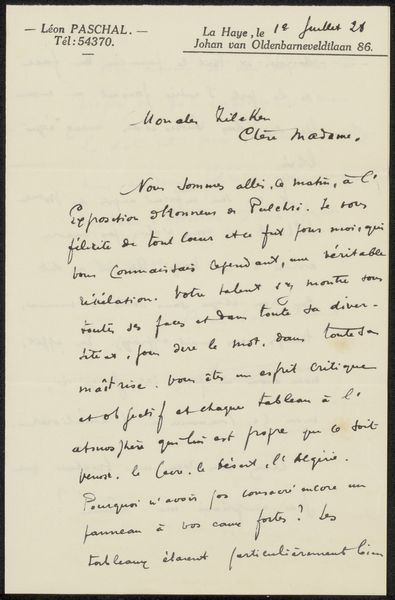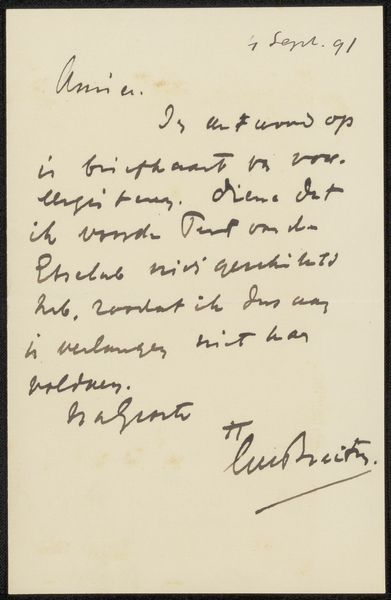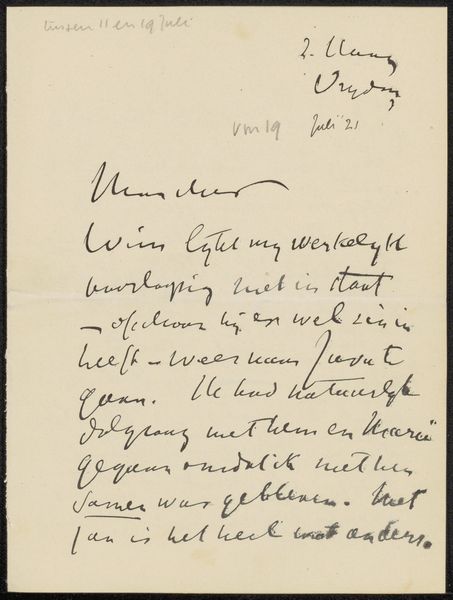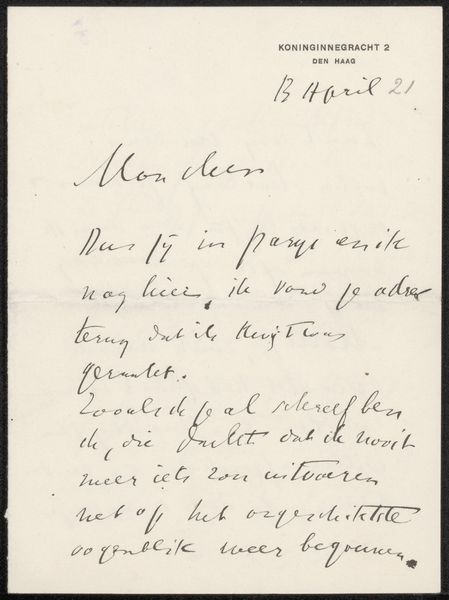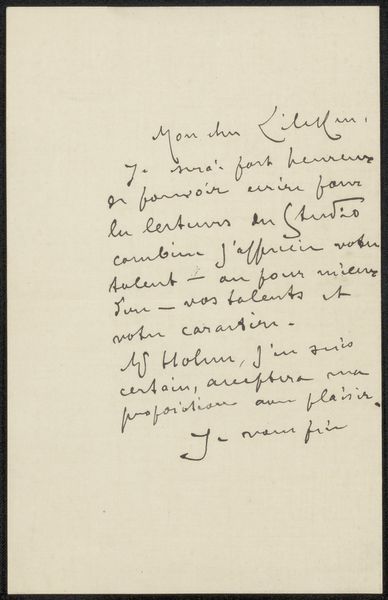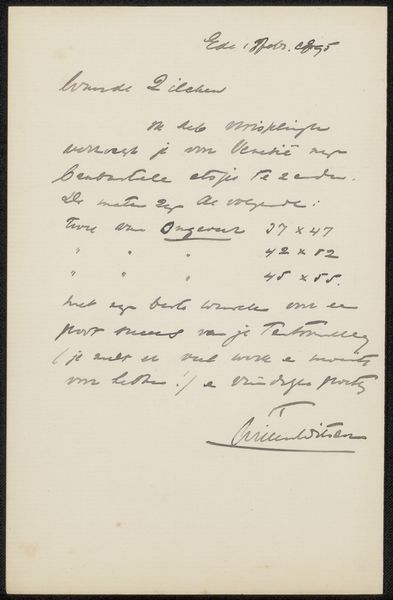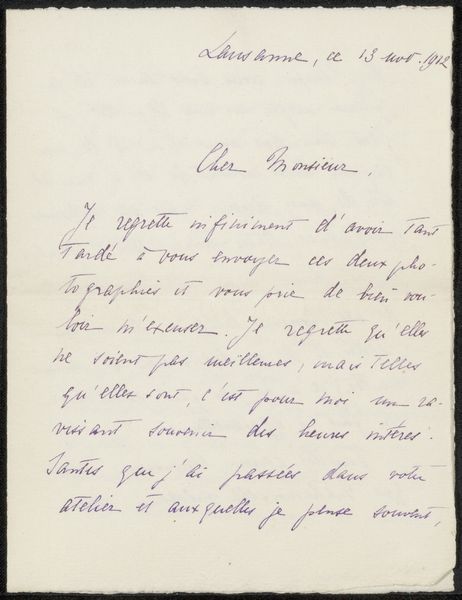
drawing, paper, ink
#
drawing
#
script typography
#
hand-lettering
#
old engraving style
#
hand drawn type
#
hand lettering
#
paper
#
personal sketchbook
#
ink
#
hand-drawn typeface
#
pen-ink sketch
#
pen work
#
sketchbook drawing
#
modernism
#
calligraphy
Copyright: Rijks Museum: Open Domain
Curator: Here we have “Brief aan Jan Veth,” a letter created sometime between 1875 and 1925 by Isaac Israels. It’s an ink drawing on paper. Editor: My first impression is one of intimacy. It’s simply handwritten, so I am curious about its production: the paper’s origin and how Israels engaged with the writing instruments. Curator: Consider the cultural symbolism inherent in handwriting itself. Every stroke, every flourish conveys something about the author's personality and intention. Think about what writing a letter meant at this moment in time. Editor: I agree. We're so distanced from the hand now; this letter brings us to a specific place in time, offering a glimpse into a personal interaction. Were the materials commonplace for the time, or did they signify status? The creation of a drawing itself elevates it. Curator: Looking at the handwriting, I notice its inherent imperfection – the uneven lines, the slight variations in pressure. All these elements imbue the writing with the personal, a sense of humanity, and contribute to the unique cultural and psychological context of a handwritten letter. Editor: Definitely. Israels likely handled the materials personally, adding to that sense of touch. The use of ink also suggests a permanence and level of intent perhaps unlike pencil or other more erasable media. Curator: The letter format implies a relationship, and even perhaps a degree of reliance on this mode of communication. It suggests time set aside for reflection, quite unlike today’s rapid-fire messaging. This would take deliberate time and work. Editor: It seems this act was intended as more than pure utility. What about the journey of this object now in a museum space? That speaks to another cycle of use and distribution. Curator: Indeed. When we contemplate the artwork, we can think not only about the letter itself, but how history has molded both our interpretation and the object itself. It becomes a marker of a specific cultural moment in our past. Editor: Thank you. Reflecting on it, I also see it as evidence of Israels' studio practice—a raw and beautiful example of art interwoven into ordinary life.
Comments
No comments
Be the first to comment and join the conversation on the ultimate creative platform.
